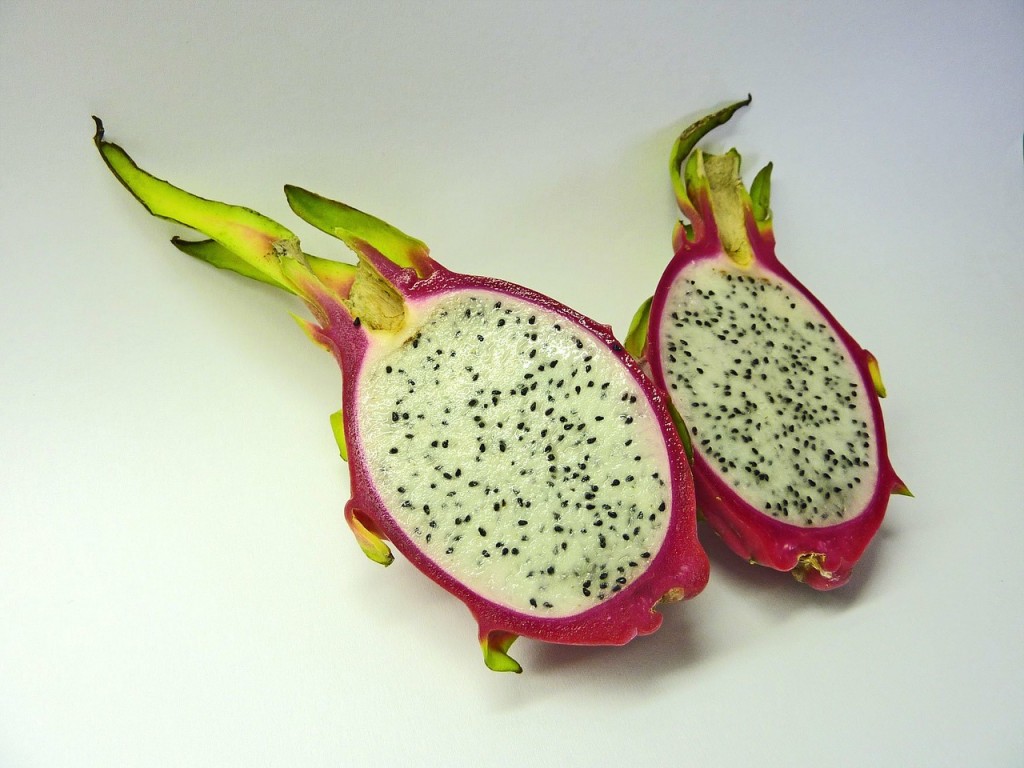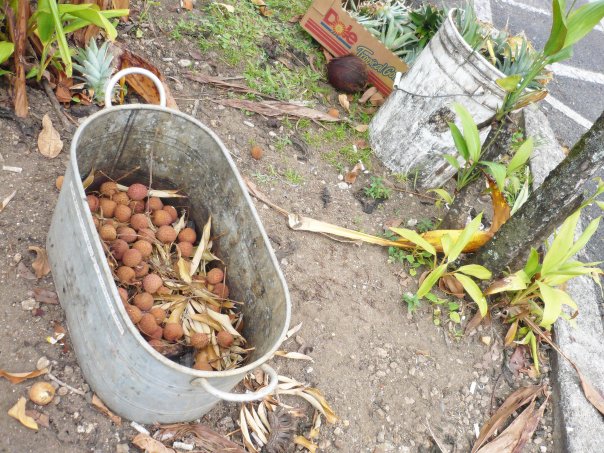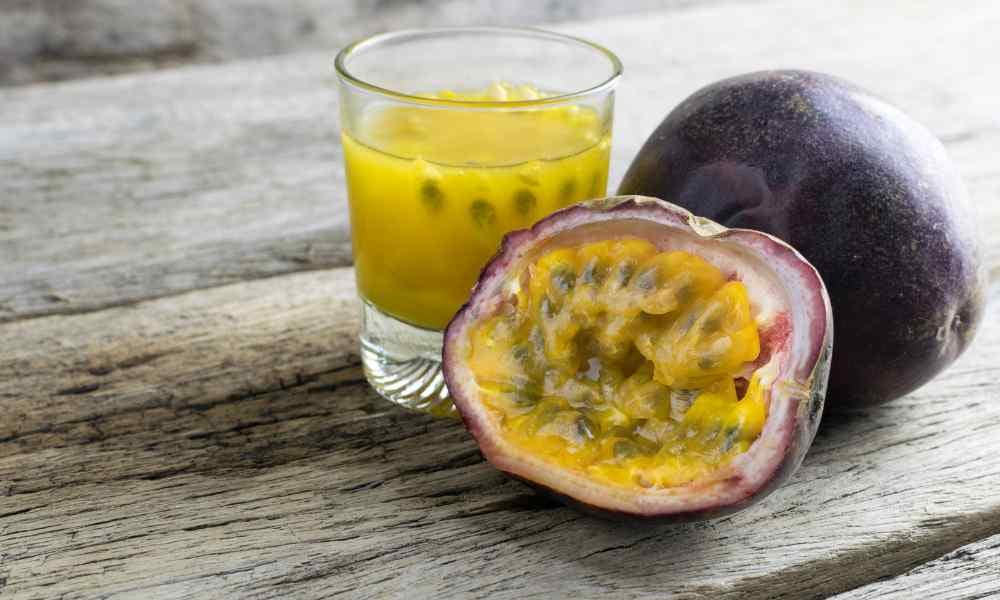Wanting a sweet taste of Hawaii’s natural splendor? Here are some of our favorite Hawaiian fruits to try when you’re visiting the islands!
The scenery of Hawaii is exotic: wet rainforests, vibrant flowers, warm turquoise ocean, and soft white sand. From nene geese and coqui frogs to hibiscus and heliconia, Hawaii has some incredibly diverse organisms that thrive in its environment. Nothing makes for a more flourishing climate than lots of sun and lots of water, and Hawaii has both in abundance.
Something else to note about these islands is wherever you find tropical climates you will find amazing exotic fruits. And Hawaii is chock-full!
There’s no better way to enjoy your island vacation than with fresh fruit. Slice it up with breakfast, add it to your cocktail, enjoy it as an afternoon snack, or indulge in it as a decadent dessert. Hawaii Fruits definitely help give off that luxurious vibe that is characteristic of the islands.
Here are a handful of the Hawaiian Islands’ exotic fruits that top my ‘personal favorites’ list. While some may sound familiar, a few may sound so unique and new that you’ll think I made them up.
Read on for quick facts, details and the best way to indulge in these sweet, juicy, and utterly tropical delights.
Great Fruits to Try in the Hawaiian Islands
Pitaya (Dragon Fruit)

This colorful cactus blossom is gaining notoriety by becoming the new superfruit for smoothies and granola bowls. Otherwise known as Dragon Fruit, Pitaya is marked differently from other dragon fruit varieties by its fluorescent coloring. Pitaya is best eaten as a blended fruit like in a smoothie, sorbet, or pitaya bowl.
Sweet, refreshing, and lacking any lip-puckering acidity, pitaya tastes like a cross between kiwi and pear. It’s rich in antioxidants, especially phytoalbumin (which is said to ward off the formation of cancer-causing free radicals). It’s also believed to help diabetes by regulating blood sugar.
Pitaya is rich in vitamin C, fiber, calcium and various antioxidants and can also help in lowering cholesterol. So next time you see signs for ‘pitaya bowls’ be sure to pull over and give this intriguing Hawaiian fruit a try.
You’ll be surprised by its bright fuchsia flesh that livens even more when blended for a smoothie.
Rambutan & Lychee

Coming from the Malaysian word ‘rambut’ meaning ‘hairy,’ rambutan is the furry cousin of lychee. Haven’t heard of lychee? Ooh, you’re in for a treat if you’re vacationing to Hawaii during the summertime.
Rambutan and Lychee are closely related to one another- they grow and ripen on trees, are roughly the same size and shape, and are both peeled from their outer layer to reveal a grape-like fruit with a seed in the middle.
They’re sugary, sweet, and juicy – sounds liek perfect Hawaii fruits. Plus, they symbolize summer to many Hawaii locals. My favorite way to eat them is to chill them in a refrigerator or ice cooler and then eat them straight out of the shell while sitting at the beach.
Rambutan’s skin is thicker and harder to get into than Lychee, though, so I recommend a knife for easier eating. Lychee’s skin is thin and easy to tear with your nails or teeth.
Rambutan is a fruit used for traditional medicinal purposes in Malaysia and Indonesia, and is high in vitamin C, as is lychee. Like pitaya, these Hawaiian fruts may also protect the body from free radicals and also help in the absorption of minerals, iron, and copper.
Rambutan is also known to boost energy from its high carbohydrate and protein content, plus it prevents bloating and dehydration. These fruits are often sold at roadside fruit stands, farmers markets, and local grocery stores in the summer months. You should give them a try!
Mountain Apple
Also known as ohi‘a ‘ai, mountain apples grow on big trees in Hawaii and are shaped like pears, but their color is very different. Varying from deep red to pink to white, mountain apples have a unique flavor- light and crisp like the scent of roses.
The trees grow in tropical forests and low-lying valleys on the windward (northern and eastern) sides of the Hawaiian islands and the fruit can be easily picked (if you can reach them!). Just be careful of damaging the skin, as it is paper-thin and can nick easily, which then makes the fruit brown quicker.
Thriving in humid climates, mountain apple season is summertim. And if you find a ripe tree you won’t be short of fruit- the branches are laden with apples!
Early Polynesian voyagers brought mountain apples to Hawaii. The fruits were nourishing for the people, but the tree’s wood was useful as well. The bark of the tree was used for medicinal purposes while the hearty trunk was used for building things. Hawaiian people also made a dye from the ohi‘a ‘ai fruit to embellish their tapa bark cloth.
Most people eat mountain apples straight from the tree, after washing them off first. I’ve also heard of people canning them or pickling them and also turning the over-ripened fruit into a sweet wine or sauce.
Rarer to find in grocery stores than lychee, rambutan or pitaya, mountain apples can be found in the wild during a hike or can be purchased at roadside fruit stops or honor stands.
Star Fruit

This juicy tropical fruit gets its name from its shape. But you won’t really notice it until you slice into it. Star fruit’s skin is yellow with tints of green and a little brown when it’s ripe and ready to eat.
The best way to indulge in this fruit is to slice it like you would a cucumber, about a half-inch thick. Once you cut the fruit up, notice the shape, and then you’ll have your ‘aha!’ moment regarding its name.
Packed with fiber, antioxidants, flavonoids, and vitamin C, star fruit grows during winter months and can be found at grocery stores, markets, and fruit stands. People have many different opinions about what star fruit tastes like, but I liken the flavor to a cross between an apple and a plum. Crunchy and juicy, you can eat the entire part of the fruit, including the skin. Many locals eat it right from the tree. But it can also be pickled, canned for jam, cooked like a vegetable, or juiced for drinking.
Strawberry Guava

Native to southeastern Brazil, strawberry guava is found in the forests of Hawaii and can grow from sea level up to 4,000 feet in elevation. Red and walnut-sized, strawberry guava grows on low bushes in clumps and can easily be found, picked, and eaten.
The fruit can be eaten whole since the thin skin is soft and the interior is juicy and edible. Strawberry guavas taste like a mix between strawberries and guava, hence its name. The plant can be found almost everywhere in Hawaii and is actually an invasive species that threatens native plants and ecosystems.
It’s not very common to find strawberry guava for purchase in Hawaii. But may find it in the natural forests of the islands. It’s a common fruit to forage for in Hawaii.
Many locals will collect the fruit for jams, jellies and juicing. It’s common to find strawberry guava flavored juices, jams, and candy in Hawaii’s grocery stores, so if you don’t find any in the wild, at least you can sample their flavor in the store!
Lilikoi

Many people know this fruit by its more common name, passion fruit, but Hawaiians and residents call it lilikoi.
Yellow and round, lilikoi is a popular flavor in the islands and is used as an ingredient in nearly everything: jams, jellies, baked goods, ice cream, cocktails, and decadent sauces. It tastes tangy and suite, like the perfect citrus fruit.
Lilikoi grows on vines and turns yellow when ripe. Eating it fresh off the vine can be a bit tricky though, since the insides are sloppy and sticky. The pulp of the lilikoi is around the individual seeds, which are edible. So you basically have to slurp the fruit out of its peel and crunch on the seeds to enjoy its flavors.
Many local residents have lilikoi growing in their yards, as it provides nice fence coverage. But it’s also an invasive species like strawberry guava.
Lilikoi grows year-round and can be found almost anywhere around the islands. But you may have a hard time finding it in grocery stores. I recommend giving this fruit a try as a Hawaii specialty item, like in a drink or a dessert.
Treasuring Hawaiian Fruits
Hawaii’s fruits have some of the most flavorful and unique tastes in the world. If you enjoy refreshing citrus and other berry flavors, we recommend the whole family to try them on your next Hawaiian vacation.




